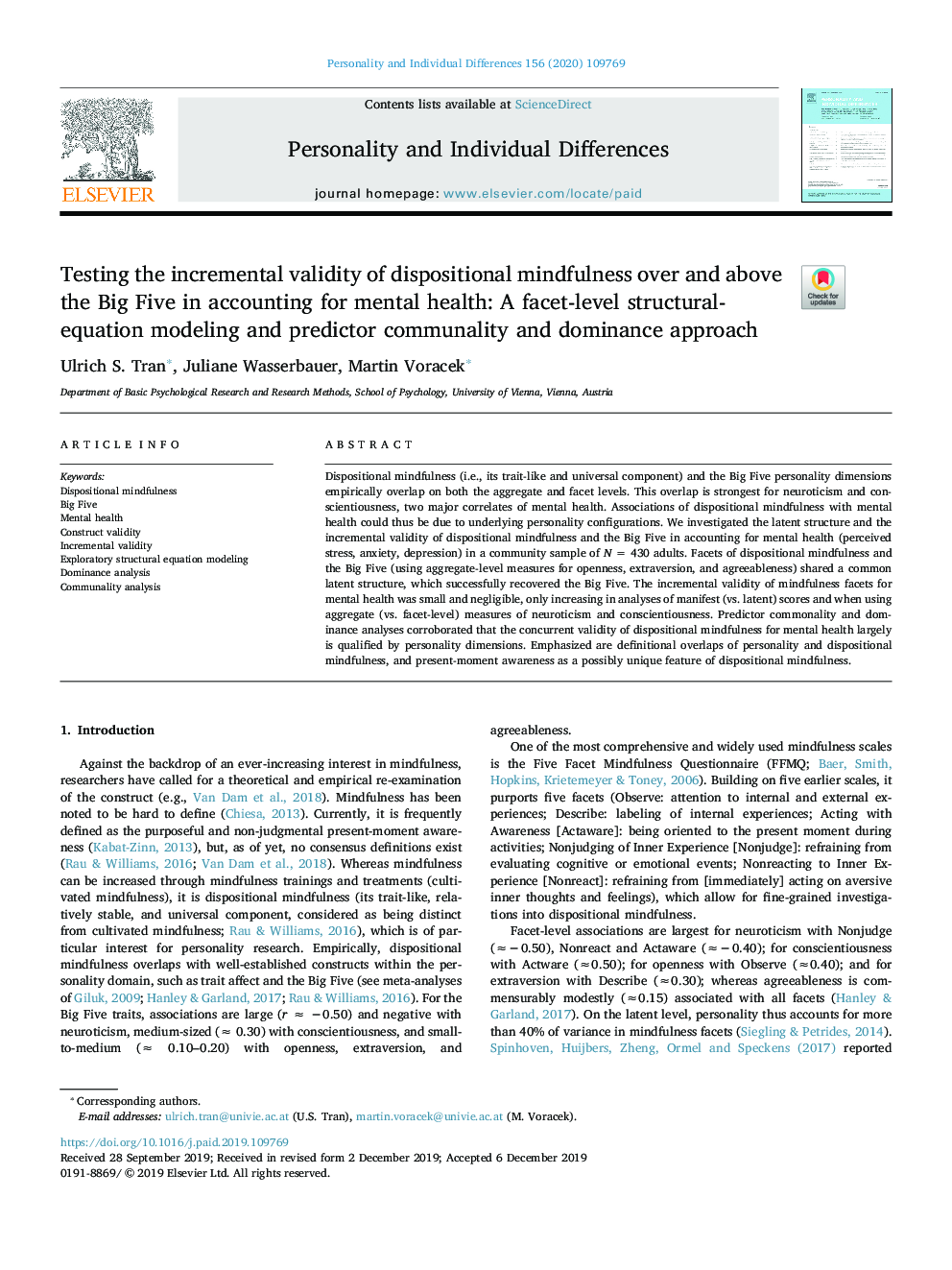| Article ID | Journal | Published Year | Pages | File Type |
|---|---|---|---|---|
| 13456677 | Personality and Individual Differences | 2020 | 6 Pages |
Abstract
Dispositional mindfulness (i.e., its trait-like and universal component) and the Big Five personality dimensions empirically overlap on both the aggregate and facet levels. This overlap is strongest for neuroticism and conscientiousness, two major correlates of mental health. Associations of dispositional mindfulness with mental health could thus be due to underlying personality configurations. We investigated the latent structure and the incremental validity of dispositional mindfulness and the Big Five in accounting for mental health (perceived stress, anxiety, depression) in a community sample of NÂ =Â 430 adults. Facets of dispositional mindfulness and the Big Five (using aggregate-level measures for openness, extraversion, and agreeableness) shared a common latent structure, which successfully recovered the Big Five. The incremental validity of mindfulness facets for mental health was small and negligible, only increasing in analyses of manifest (vs. latent) scores and when using aggregate (vs. facet-level) measures of neuroticism and conscientiousness. Predictor commonality and dominance analyses corroborated that the concurrent validity of dispositional mindfulness for mental health largely is qualified by personality dimensions. Emphasized are definitional overlaps of personality and dispositional mindfulness, and present-moment awareness as a possibly unique feature of dispositional mindfulness.
Keywords
Related Topics
Life Sciences
Neuroscience
Behavioral Neuroscience
Authors
Ulrich S. Tran, Juliane Wasserbauer, Martin Voracek,
